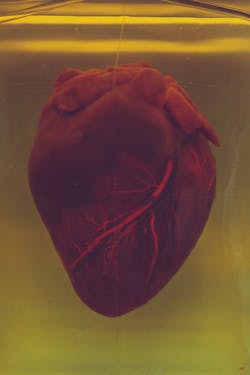Immune therapies for heart disease aim of international research network
An international group of researchers has teamed up to study the biological processes that drive injurious inflammation after heart attacks, with a goal of finding therapies to help people recover more completely and reduce the risk of permanent heart damage, according to a news release from Washington University School of Medicine in St. Louis.
With a $6.5 million grant from the Leducq Foundation, they have established a network called The Inflammatory-Fibrosis Axis in Ischemic Heart Failure: translating mechanisms into new diagnostics and therapeutics network (IMMUNO-FIB HF) to study the intertwined roles of inflammation and fibrosis, or scarring, in driving long-term heart damage.
IMMUNO-FIB-HF is part of the foundation’s Transatlantic Networks of Excellence, an effort that aims to foster innovative scientific research in cardiovascular and neurovascular disease by bringing together European and North American scientists with complementary expertise. Robert J. Gropler, MD, Professor of Radiology and Senior Vice Chair and Division Director of Radiological Sciences at Mallinckrodt Institute of Radiology (MIR) at Washington University School of Medicine in St. Louis, leads the North American effort.
A heart attack triggers an inflammatory response and sets off a cascade of biological events that can end in structural changes to the heart that impair the organ’s ability to pump blood, a process called cardiac remodeling. Researchers have tried to find drugs to interrupt this process, but a lack of detailed information on how the process unfolds has stymied efforts to come up with good therapeutic targets.
To better understand the processes at work, the researchers need to be able to see what is going on inside the heart in the aftermath of a heart attack. Co-principal investigator Yongjian Liu, PhD, Associate Professor of Radiology at MIR, has developed a positron emission tomography (PET) imaging agent that detects inflammatory white blood cells known as CCR2+ monocytes and macrophages.
Another co-investigator has developed an imaging agent for fibroblasts, cells that produce scar tissue. Both imaging agents have proven useful in animal studies. Liu leads the team’s effort translating them for use in people, so they can track inflammation and fibrosis in heart attack patients in the days, weeks and months after such events.
By combining these imaging agents with other measures of heart damage and abnormal function, the researchers expect to be able to see how such cells contribute to cardiac remodeling and whether investigational therapies have an effect on these cells. Two experimental therapies are being developed by other groups in the network.

